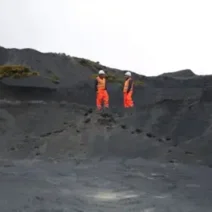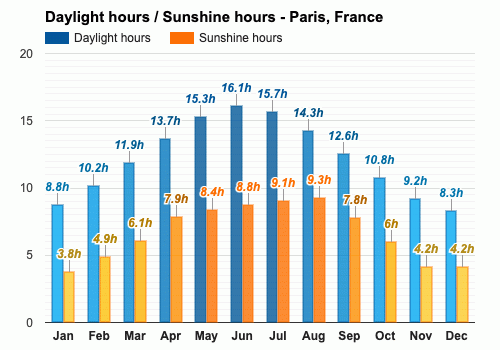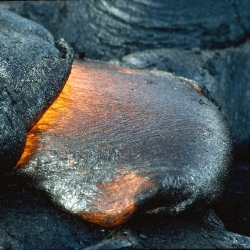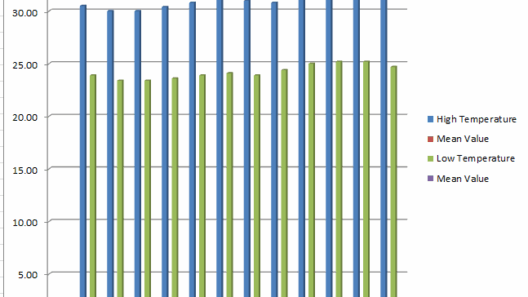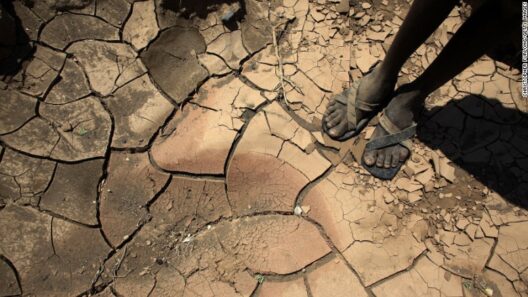Paris, often referred to as the City of Light, is not only renowned for its artistic and architectural grandeur, but also for its unique climatic characteristics. Understanding the weather in this captivating city is an essential aspect for both residents and travelers alike. The city boasts a temperate oceanic climate with distinct seasonal variations. This article delves into the intricacies of Paris’s climate, shedding light on its seasonal changes, temperature fluctuations, and the overall environmental implications.
The climate in Paris is largely dictated by its geographical location and atmospheric conditions. The city experiences mild winters, warm summers, and a fair share of rainfall throughout the year, making it a complex tapestry of weather patterns. In winter, temperatures typically hover around 3 °C (37 °F), while the summer months can elevate to an average of 25 °C (77 °F). However, it is not uncommon for temperatures to breach the 30 °C (86 °F) threshold during heatwaves.
During the winter months of December through February, Paris transforms into a picturesque landscape draped in cool mist and, occasionally, snow. The northern winds can bring a chill that permeates the air, and although significant snowfall is a rarity, the city occasionally experiences light flurries. Visitors during this season can embrace the atmosphere enhanced by twinkling holiday lights and cozy cafés offering warm beverages. Despite the cold, the beauty of the city’s architecture, adorned with frost, is undeniably enchanting.
As spring unfolds, Paris awakens from its winter slumber. The months of March to May see an invigorating shift, with temperatures gradually rising and an increase in floral blooms across parks and gardens. This period is often characterized by variable weather: sunny days are interspersed with sudden showers. The average temperature ranges from 10 °C (50 °F) in March to a pleasant 20 °C (68 °F) in May. In this time of renewal, Parisians tend to gravitate outdoors, reveling in the ambiance of blooming cherry blossoms in the Parc des Buttes-Chaumont or enjoying picnics along the Seine.
Summer in Paris, which spans from June to August, can bring both joy and discomfort. The warmth of the sun draws locals and visitors alike outdoors, with street festivals, open-air concerts, and sidewalk cafés brimming with life. However, heatwaves have occasionally led to sweltering temperatures. The city can experience fluctuations, with some days reaching beyond 30 °C (86 °F). These heat surges can lead to challenges, particularly for vulnerable populations. Moreover, with climate change altering weather patterns globally, Parisians face an uncertain future regarding their summer climate. Humidity can also rise, making the heat feel more oppressive at times.
Autumn, from September to November, ushers in a remarkable transformation as the city dons its fall colors. The average temperatures start to decline, averaging around 15 °C (59 °F) in September and dropping to about 7 °C (45 °F) in November. Rainfall becomes more frequent during this season, offering a refreshing respite to the warmer months. Visitors can enjoy an exhilarating experience exploring the streets scattered with golden leaves while sipping on fragrant hot chocolate. The allure of Paris in autumn is often described as poetic, with the ambiance of the fading sunlight casting a soft glow over the historic landmarks.
Paris’s annual precipitation averages about 650 mm (25.6 inches), distributed fairly evenly throughout the year. Rainfall can strike at any time and often appears in short, sudden bursts. The moist climate contributes to the lush greenery of parks and gardens, fostering a biodiversity that many urban areas lack. This persistent moisture signifies the importance of sustainability within the city, prompting initiatives aimed at urban greening and climate resilience. In the face of climate change, Paris is poised to adapt and mitigate the effects of increasing temperatures and precipitation variability.
One cannot disregard the impact of urbanization on Paris’s climate. The infamous urban heat island effect leads to elevated temperatures in densely built areas compared to surrounding rural locales. This phenomenon exacerbates the challenges posed by climate change, placing additional pressure on the city’s infrastructure. As Paris seeks to balance modernization with sustainability, the intricate relationship between its climatic conditions and urban living becomes increasingly relevant.
The effects of climate change are palpable in Paris, just as they are elsewhere globally. Fluctuating weather patterns, increased frequency of heatwaves, and changing precipitation rates call for concerted efforts to create a sustainable future. Initiatives such as promoting biking over driving, expanding green spaces, and enhancing public transport reflect a commitment to addressing these challenges. Parisians are increasingly aware of the implications of their city’s climate and are becoming pivotal players in advocating for environmental stewardship.
Indeed, exploring the climate of Paris invites a deeper understanding of not only the city’s weather but also the global challenges of climate change. The unique confluence of geography, culture, and climate presents an opportunity for resilience built on awareness and adaptation. As you traverse the cobblestone streets and marvel at the architectural wonders of Paris, remember that every season tells a story of change and a promise of renewal. Embrace the diversity of weather as an integral part of the Parisian experience, and consider how your actions can contribute to the city’s enduring beauty and sustainability.
In conclusion, the climate of Paris is multifaceted and dynamic, shaped by seasonal shifts and environmental challenges. Observing each seasonal transition reveals the alluring charm of the City of Light, encouraging both curiosity and contemplation. Embrace these elements not merely as fluctuations in weather, but as reflections of our world’s broader environmental narrative.

